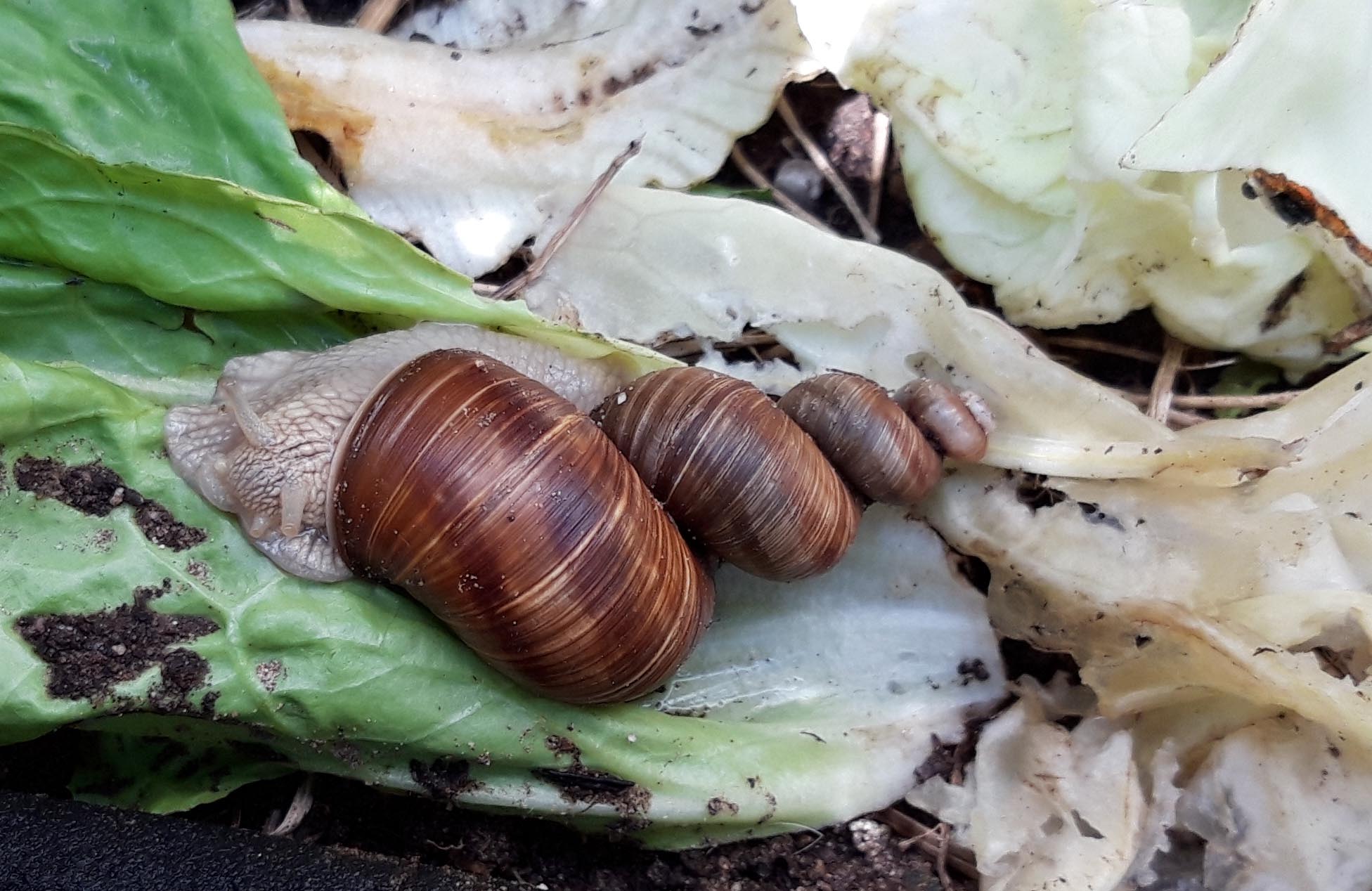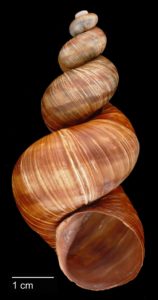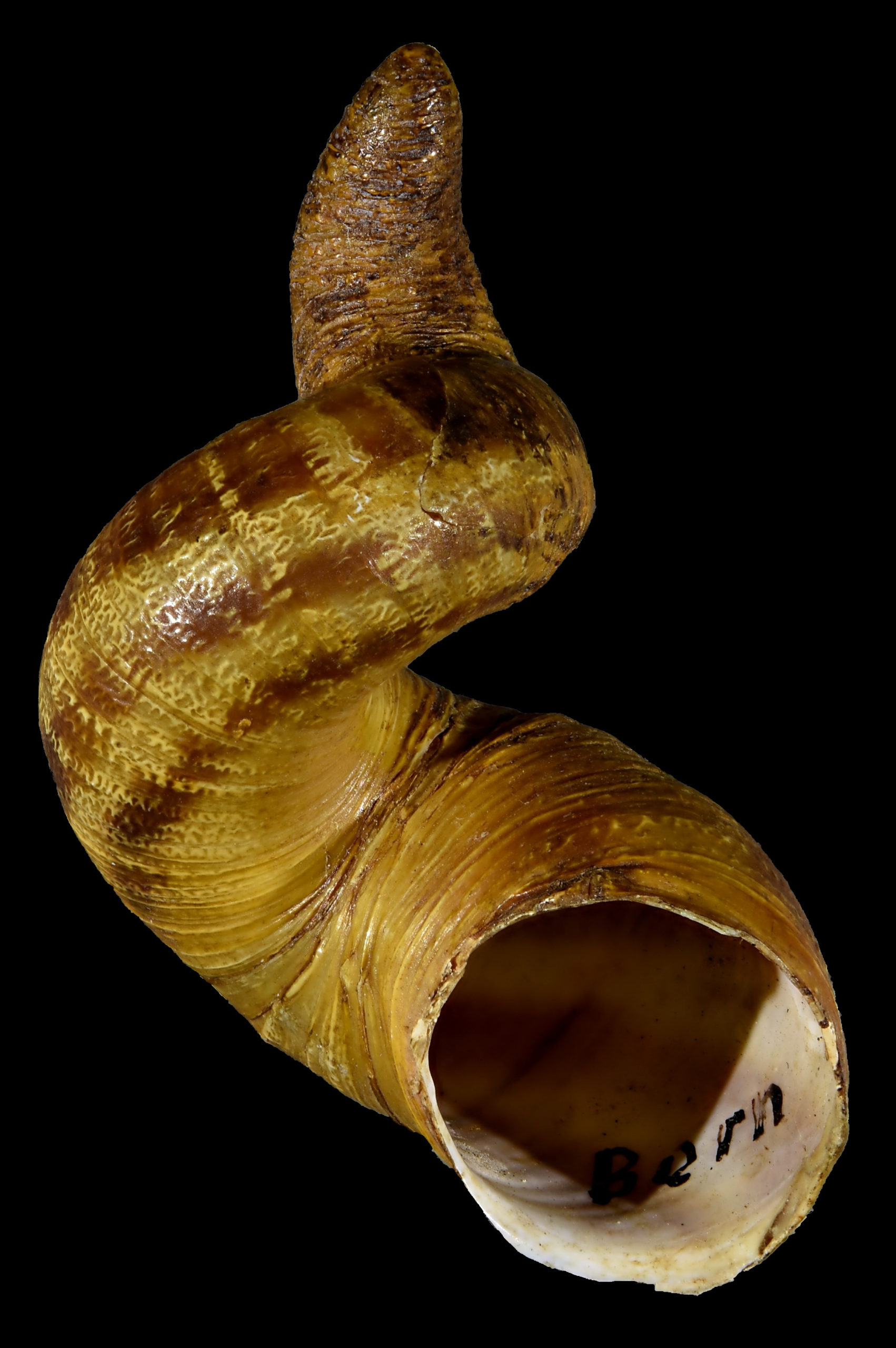Our treasure of the month: A scalarid Roman snail
 Still alive: The scalarid Roman snail Helix pomatia from Darmstadt. © Medina España
Still alive: The scalarid Roman snail Helix pomatia from Darmstadt. © Medina España
Our treasure of the month was no ordinary Roman snail. Its shell makes it an exceptional specimen for the Malacological Collection of the LIB. Unlike many of its congeners, our treasure had a snail shell that stretches upwards in the shape of a staircase. Is this a freak of nature like the narwhal skull with two tusks or even a new species?
Normally, the whorls of Roman snails Helix pomatia form a globular shell. Our treasure of the month, however, made its slimy tracks with a scalarid shell that grew upwards in a spiral similar to a staircase. It is not known exactly how the malformation develops.

The scalarid shell of our treasure, the Roman snail Helix pomatia. © LIB, Lauschke
The bizarre formation can have different causes, says Prof. Dr. Bernhard Hausdorf, head of the Mollusca Section at the LIB: “They can be the result of non-genetic malformations in early development or to mutations in genes.” In fact, there are mutations already fixed in the genes of various groups of snails that form scalarid shells characteristic for the respective species, the Mollusca expert further explains. However, this is not the case with the Roman snail.

This is what the shells of the Roman snail look like without deformity. © pixabay
Since the Middle Ages, Roman snails have also existed in northern Germany: monks settled them near their monasteries in order to be able to eat protein-rich food during the actually “meatless” Lent without stumbling over their religious principles. The Roman snail is the most widespread species of the genus Helix in Europe.
A local resident – Medina España – discovered the Roman snail with the unusual shell in her garden near Darmstadt, and sent Hausdorf photographs of the animal. Later – after the animal passed away after a few happy snail years – she donated the shell to the malacological collection of the LIB. In addition to this bizarre find of the native Roman snail, 27 other Helix species from Southern Europe, the Near East and North Africa are safely stowed away in the drawers of the LIB’s collection.
© NHM Wien Bornsammlung Cornu copiae (MO14357)
A special snail shell with a staircase shape is stored in the Natural History Museum in Vienna. The Viennese naturalist Ignaz von Born, described the genus and species of the Garden Snail after this specimen: Cornu copiae, which the shell apparently reminded him of. Actually, the naming rules of zoology state that malformations must not be the basis for names. Nevertheless, it was decided to continue calling the genus of the Garden Snail Cornu.
Contact
Prof. Dr. Bernhard Hausdorf
Head of Section Mollusca
Leibniz Institute for the Analysis of Biodiversity Chance
Tel.: +49 40 42838-2284
E-Mail: hausdorf@zoologie.uni-hamburg.de



